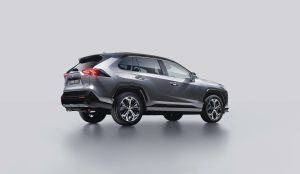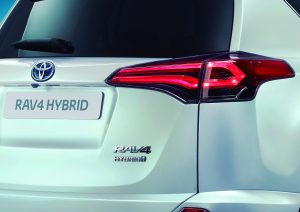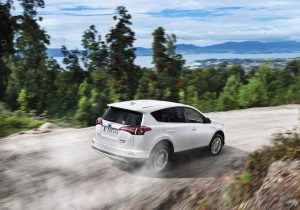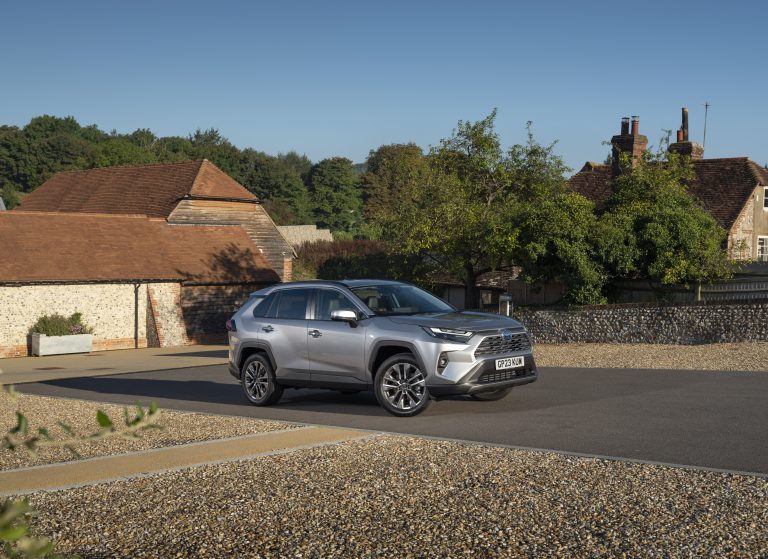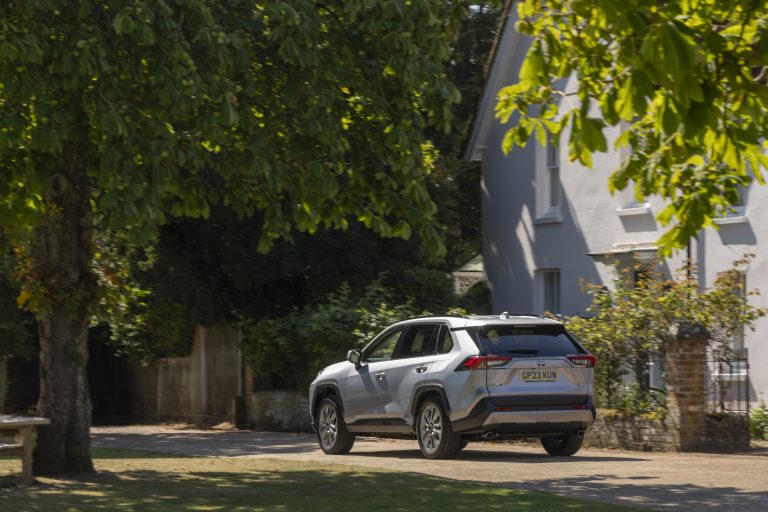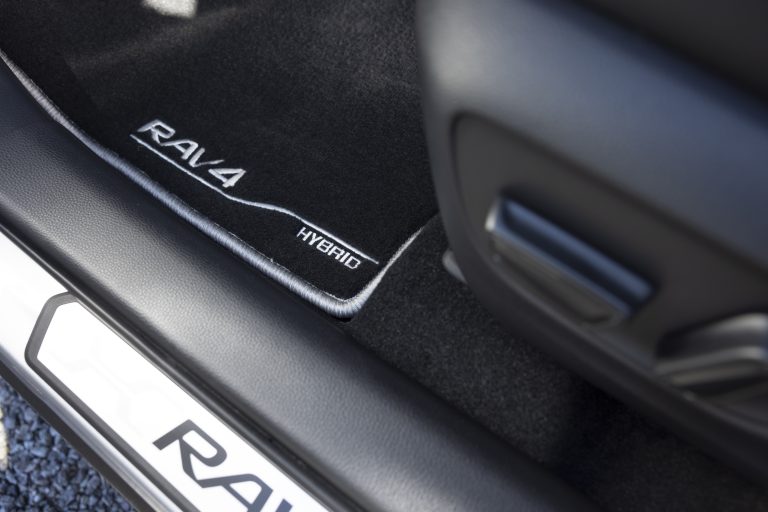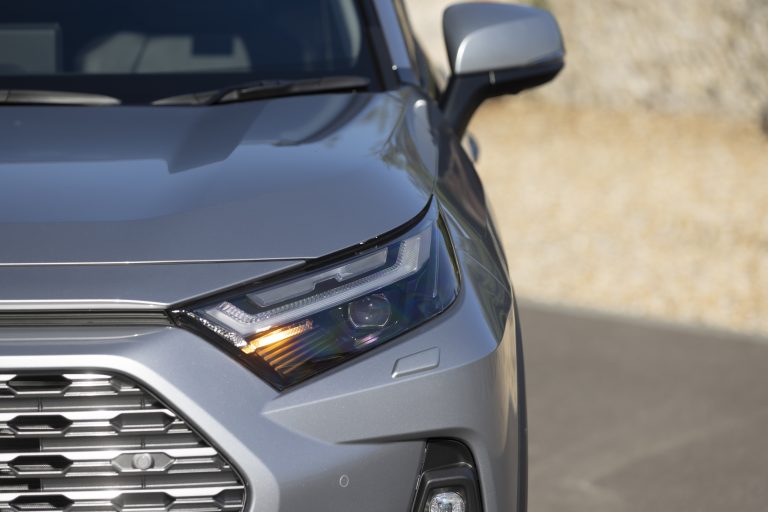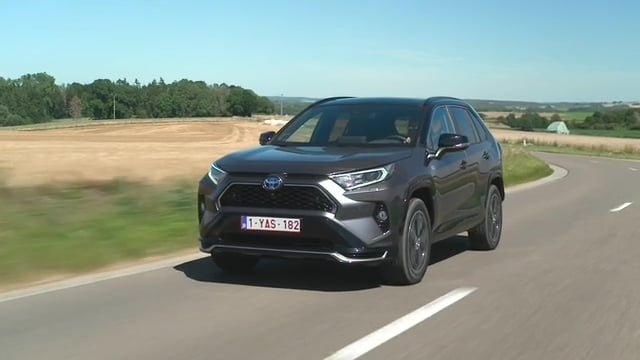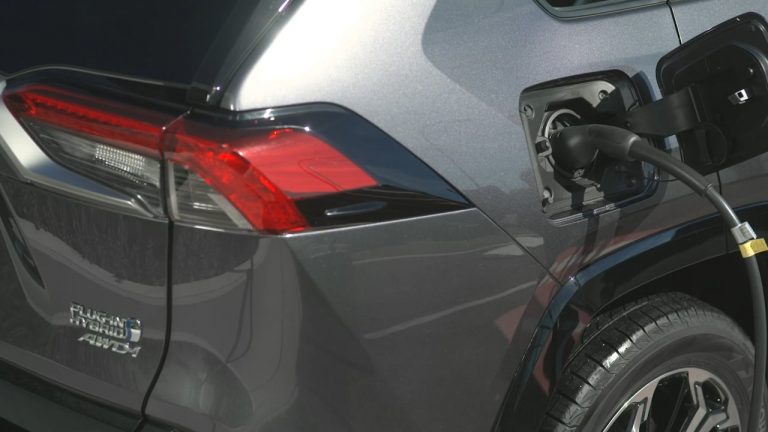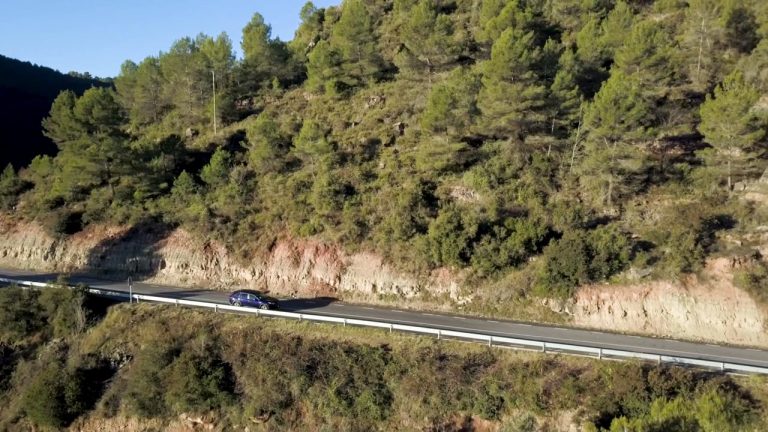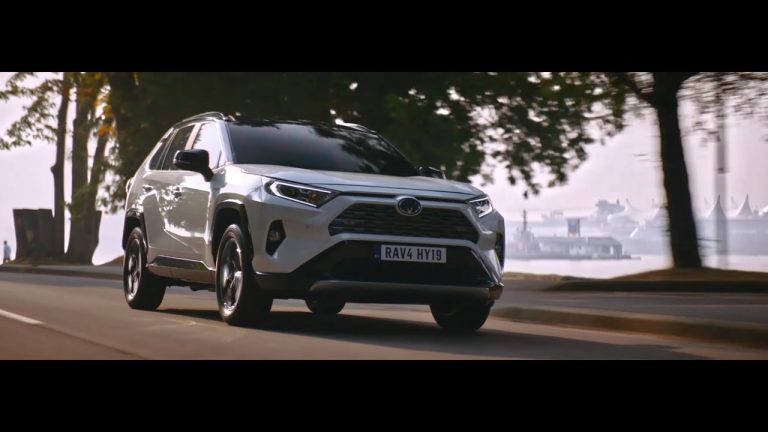10 Million Worldwide Sales for the Toyota RAV4, the Original Recreational SUV
- Toyota’s ground-breaking SUV reaches 10 million sales landmark
- Total achieved across 26 years and five model generations
- RAV4 founded the market for compact, urban SUVs and has remained an international best-seller
- Toyota prepares for another new chapter in the model’s history with the introduction of the RAV4 Plug-in Hybrid scheduled for the second half of 2020
RAV4 has joined the ranks of Toyota models that have achieved eight-figure sales. Cumulative figures for the top-selling SUV passed 10 million at the end of February this year, spanning five generations of the vehicle manufactured since 1994.
As a global Toyota model, RAV4 has gone from strength to strength since its launch. Having originated the market segment for new kind of compact, agile, recreational SUV, it has continued to set standards, with sales reaching new heights.
In 2019, it was not only the world’s best-selling SUV, it was also the fourth best-selling passenger car overall. North America is by far its strongest market, with more than half a million annual sales (535,000 in 2019), followed by Europe (133,000) and China (127,000).
In Europe, RAV4’s sales tally has reached more than two million since 1994, while the latest, fifth generation model, introduced in early 2019, has set a new annual record of more than 130,000 units. In the UK, almost 220,000 RAV4 have been sold since launch,
This year the RAV4 range will mark an important evolution with the launch of the new RAV4 Plug-in Hybrid, offering customers even greater potential for all-electric driving with zero emissions and zero fuel consumption.
Toyota RAV4: from World First to World’s Best
When the first generation RAV4 was revealed at the Geneva Motor Show in March 1994, few could have anticipated how this bold new concept in motoring would reshape the automotive marketplace. As well as pioneering a new type of vehicle, it would embrace new technologies and create a whole new market for compact, agile and versatile SUVs ideally suited to modern life.
RAV4 was an original, heralding a new era for 4x4s and the response was immediately positive. From the outset, it was a global model: sales started in Japan in May 1994, followed by Europe, Africa, Australia and Latin America the following month. Its North American debut came in January 1996.
Initial production estimates were for 4,500 sales a month, but when 8,000 orders were taken in the first month alone, production volumes were doubled. RAV4 paved the way for a whole new SUV segment that has not stopped growing since: more than a quarter of a century on from its debut, RAV4 was the world’s best-selling SUV in 2018 and 2019, and in 2019 was the fourth best-selling passenger car overall. Toyota’s policy of constant improvement in line with the changing tastes and demands of motorists has ensured RAV4 continues to set standards for quality, performance and practicality.
The beginning
The ideas behind RAV4 (Recreational Active Vehicle with 4-wheel drive) were first expressed in the RAV-FOUR concept car at the 1989 Tokyo Motor Show, indicating Toyota’s interest in creating a compact all-wheel drive model. This was just a design study, with none of the detail required for an actual development model, but it gained an enthusiastic welcome from the public. In 1991, the project was given the green light and development work began.
New concept, new challenges
The Chief Engineer for the RAV4 project, Masakatsu Nonaka, found that it wasn’t easy to convince other Toyota departments that a new mass-production car should be created to be sold in a market segment that didn’t yet exist. The term “Sports Utility Vehicle” was still unknown and there were many within Toyota who simply couldn’t grasp the concept of such a compact 4×4. In fact, internal resistance even stalled the project at one point, but support from an unexpected quarter gave it new life.
Toyota’s Japanese and European sales divisions, being in close contact with market, believed the time was right for this type of car. Together they put the project back on track, and they were proven right: very soon after the RAV4’s launch it was being widely acclaimed as a new trendsetter.
From niche model to global car
The compact SUV market that Toyota created quickly flourished. Toyota sold around 53,000 RAV4 in 1994, doubling, then tripling the total in the next two years. Sales continued to grow with each successive generation, even as almost every competitor manufacturer brought their own models to the market. In 2019, global RAV4 sales were more than 17 times the total achieved in the model’s first year.
This enduring success owes much to Toyota’s constant improvement of the product. With each new generation, it has listened to the comments of motorists and adapted the vehicle’s size, functionality, performance and styling to meet the market’s changing preferences and requirements.
For example, the third generation saw the spare wheel moved from its position on the back door, giving the car a more sophisticated appearance. And with the fourth generation, the wheelbase was standardised worldwide. The three-door model had been discontinued earlier so that now RAV4 was exclusively a five-door vehicle and more spacious than ever before.
Technical excellence
Toyota also kept RAV4 technically advanced, introducing new vehicle platforms and developing intelligent all-wheel drive systems that combined better handling with more efficient performance, both on-road and off. Even during the lifetime of the first generation model, Toyota recognised that all-wheel drive was not a requirement for all customers and so expanded the model’s appeal with the option of two/front-wheel drive.
Where powertrains were concerned, the choice was tailored to suit the demands of different world markets, including both petrol and diesel units, up to 3.5-litre capacity. Again, the focus was on efficiency and performance appropriate to the vehicle’s role as an urban SUV, equipped to accommodate families, or as an ideal partner for people who enjoy active lifestyles.
The first hybrid
In 2016, Toyota presented the first RAV4 Hybrid, a vehicle that preserved all the qualities of the fourth generation model but added the benefits of a full hybrid electric powertrain. As the first full hybrid in its segment in Europe, it strengthened the appeal of the RAV4 with class-leading fuel economy and emissions, and smooth powerful performance – including a highly efficient electric all-wheel drive system.
RAV4 today
The current, fifth generation RAV4 was launched in Europe in 2019 – principally as a hybrid in western European markets. It is the first SUV to be built on Toyota’s GA-K modular platform, which, with a low centre of gravity and significantly greater body rigidity, contributes to superior handling, ride comfort, a spacious interior and class-leading load space. The new platform also gave the design team more freedom to create an eye-catching design with lower roof and hood lines.
The hybrid system features a new 2.5-litre petrol hybrid Dynamic Force engine, offering 215bhp in front-wheel drive form and 219bhp with all-wheel drive, delivering step-changes in power, responsiveness and class-leading efficiency.
RAV4’s intelligent all-wheel drive system (AWD-i) has been comprehensively improved to achieve a “drive on any road” capability, with much stronger performance in challenging conditions and secure handling on slippery surfaces.
The next chapter- the RAV4 Plug-in Hybrid
Building on RAV4’s success as a pioneer of hybrid power among SUVs, Toyota will extend the benefits of the technology with the introduction of the new RAV4 Plug-in Hybrid during the second half of 2020. This will be a new flagship vehicle for its hybrid line-up that promises to be not only more powerful but also more emissions and fuel-efficient than any other in its class.
The RAV4 Plug-in Hybrid will offer customers a best-of-both-worlds solution. It features Toyota’s latest hybrid-electric vehicle technology, with higher power and better driving dynamics, and also has a genuine pure electric EV driving capability, free from concerns about driving range or the need to stop to recharge the battery.
Toyota has harnessed the boost its performance electric power can deliver to achieve a significant increase in output compared to the standard RAV4 Hybrid, deploying a new, high-capacity lithium-ion battery and adding an enhanced boost converter to the hybrid system’s power control unit. The 2.5-litre Hybrid Dynamic Force petrol engine is based on the unit featured in the regular RAV4 Hybrid, with improvements to meet the performance requirements of the plug-in hybrid system.
With full system output of 302bhp/225kW*, it has the potential to deliver acceleration from rest to 62mph in around just six seconds*, while Toyota’s pre-homologation, WLTP-standard data indicates class-leading low CO2 output.
The RAV4 Plug-in Hybrid will also have a greater driving range in electric EV mode, with zero fuel consumption and exhaust emissions. The driver will be able to switch seamlessly from hybrid to pure EV driving, with the potential to cover greater distances than any competitor plug-in hybrid SUV on electric power (battery charge and driving conditions permitting), well beyond the 50km average European daily commuting distance. Moreover, speeds up to 84mph can be reached without any intervention from the internal combustion engine, even under full acceleration.
*Subject to final homologation
Toyota RAV4: Five Generations of Innovation and Achievement
First generation, 1994 – 2000
RAV4 made its debut in 1994 as the world’s first urban SUV, pioneering a new market segment that was destined to become central to the automotive world. In its original form it was a three-door model with compact proportions, measuring just 3.69m long. Power came from a 127bhp 2.0-litre petrol engine, mounted transversely, while the transmission provided permanent all-wheel drive, but without the low-ratio transfer box found in conventional, rugged SUVs. Other innovations that were destined to become the norm included a lightweight monocoque body and independent rear suspension. RAV4’s compact size and high driving position made it easy to manoeuvre, while its nimble handling and passenger comfort were more akin to a hatchback than an AWD vehicle. In 1996 the range was expanded to include a five-door version (measuring 4.1m long) and the option of (front) two-wheel drive. A three-door soft-top followed and, pushing innovation once again, an EV battery electric model was produced in limited numbers between 1997 and 2000.
Second generation, 2000 – 2006
Entering its second generation with the turn of the millennium, the RAV4 has developed the benefit of the experience Toyota had gained from its ground-breaking introduction. Constructed on a new platform, both three and five-door versions were slightly longer – +5.5 and +4cm respectively. Two petrol engines were offered: 121bhp 1.8-litre and 148bhp 2.0-litre units. The full-time AWD adopted a centre limited-slip differential, while customers could specify a Torsen rear differential as a factory option. In 2001, diesel power was offered in RAV4 for the first time, a 2.0-litre D-4D direct injection unit with 114bhp.
Third generation, 2006 – 2012
The RAV4 again benefited from an all-new platform for its third generation, which reached the market in 2006. The three-door body style was discontinued and the five-door grew significantly in size, reflecting changes in customer preferences and requirements. The new model measured 19cm longer overall, while a long-wheelbase version was also manufactured for sale in the USA and Russia. Engine choice was extended as well, with 2.0, 2.4, 2.5 and 3.5 (V6) petrol units, plus a new 2.2-litre diesel. The model also marked the debut of a new Toyota all-wheel drive system with an electronically controlled coupling that operated automatically, according to the vehicle’s speed, throttle operation, steering angle and G-forces. The RAV4’s handling capabilities were further developed with the first application of Downhill Assist Control and Hill-start Assist Control.
Fourth generation, 2013 – 2018
The fourth generation RAV4, introduced in 2013, saw Toyota adopt a standard wheelbase for all world markets, with the vehicle’s length growing again, by 23.5cm. The powertrain choice included 2.0 and 2.5-litre petrol and 2.0 and 2.2-litre diesel engines. More advanced AWD technology was introduced with the new intelligent Dynamic Torque Control system, and the addition of two new functions: cornering control and a sport driving mode. In 2016, the RAV4 underwent its most radical development yet, with the introduction of the first full hybrid electric version. Toyota’s first compact hybrid SUV offered total system power of 194bhp, giving seamless acceleration from 0-62mph in just 8.3 seconds, while returning class-leading fuel consumption of 57.7mpg and CO2 emissions from as low as 115 g/km.
Fifth generation, 2018 to date
The fifth generation RAV4 was revealed in 2018 and launched in Europe at the start of 2019. It was the first SUV to be built on a Toyota New Global Architecture platform, bringing fundamental benefits in terms of handling, safety and design. As an all-hybrid range in Western Europe, it adopted Toyota’s fourth generation hybrid technology, together with a new 2.5-litre Dynamic Force hybrid engine – a unit notable for its significant gains in terms of power, responsiveness and efficiency. As a result, its fuel economy and emissions are best-in-class. In 2020, the fifth generation will embrace further technical innovation with the introduction of the first RAV4 Plug-in Hybrid. This will be the most powerful RAV4 yet built, with 302bhp and rapid acceleration, but at the same time delivering exceptionally low CO2 emissions and fuel consumption.
ENDS

